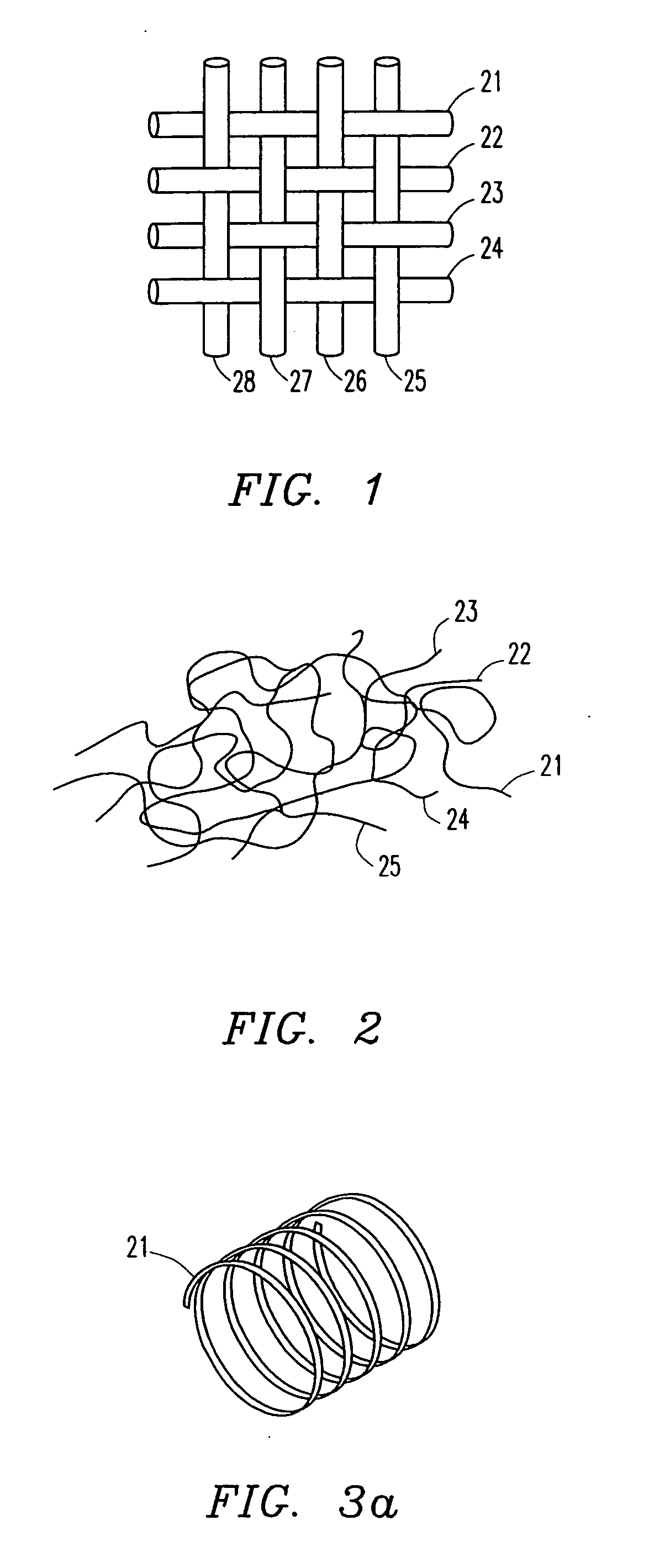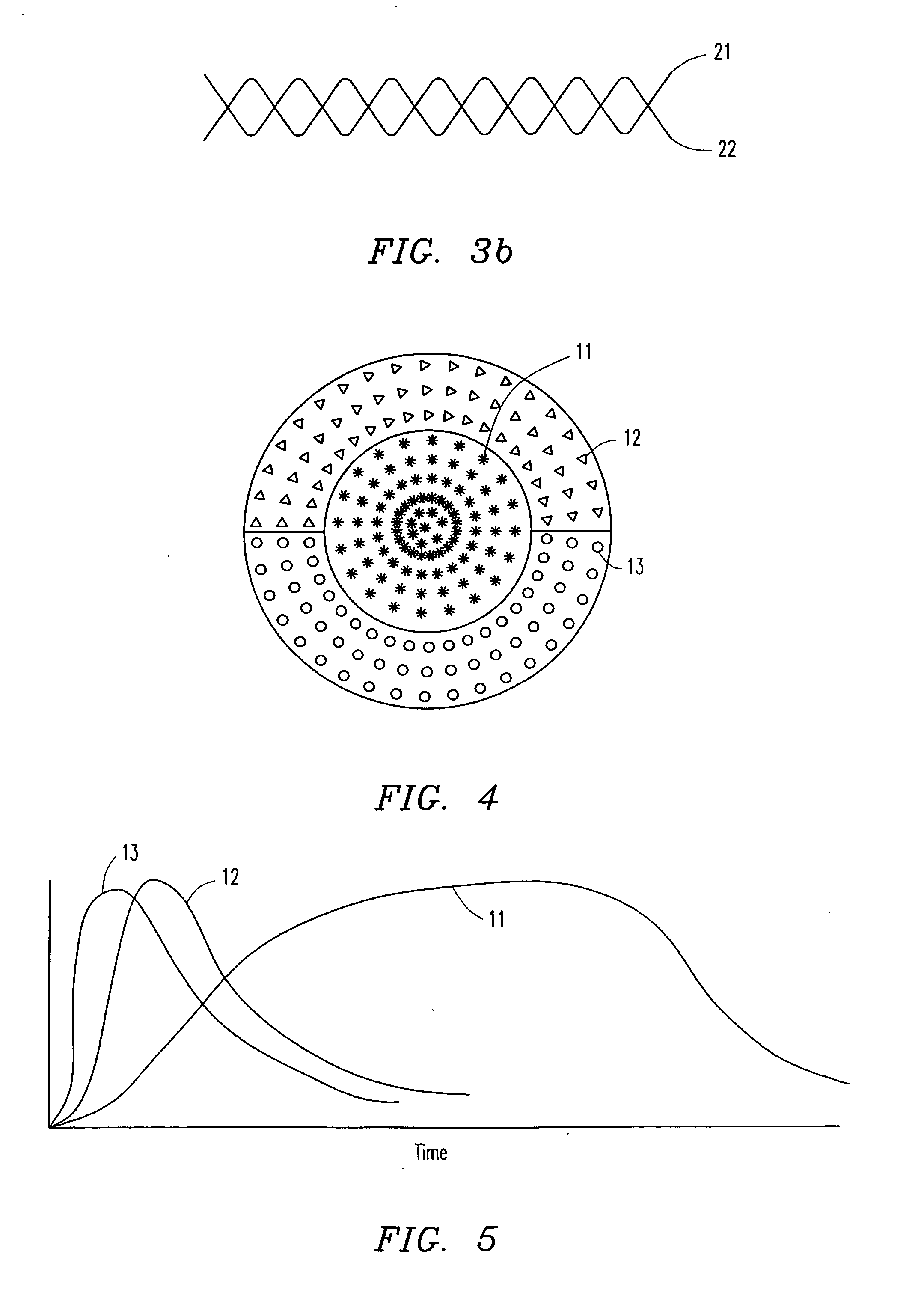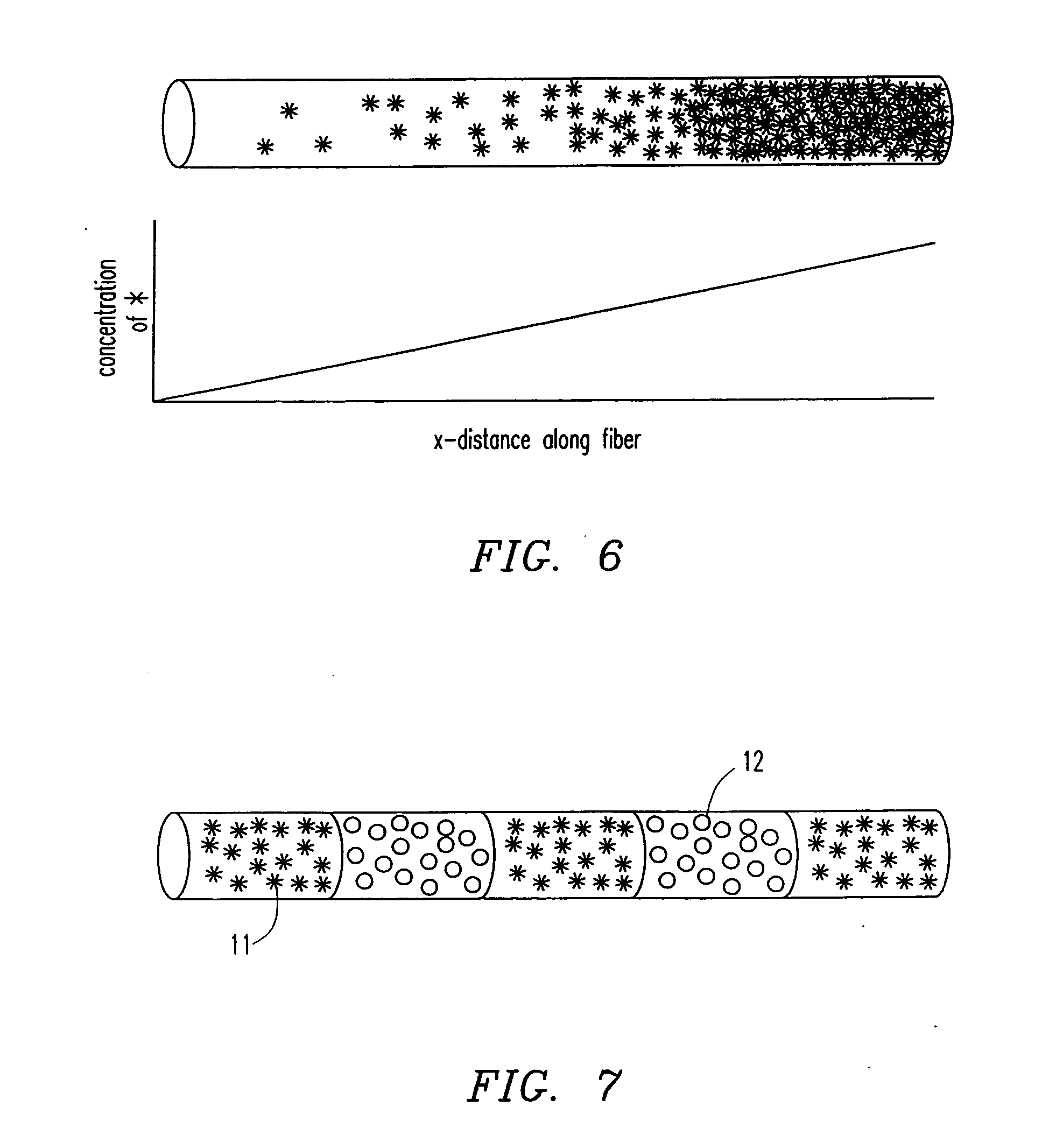Fabrication of drug loaded biodegradable polymer fibers
a biodegradable polymer fiber and drug technology, applied in the field of tissue engineering, can solve the problems of large scaffolds that cannot be used, small scaffolds, and no way to ensur
- Summary
- Abstract
- Description
- Claims
- Application Information
AI Technical Summary
Benefits of technology
Problems solved by technology
Method used
Image
Examples
example 1
Fabrication of Polymer Fibers Containing Therapeutic Agents
[0080] In one embodiment of the present invention, the following procedure is used to create the drug-releasing fibers. The apparatus is depicted in FIG. 8. First, a biodegradable polymer such as poly(L-lactic acid) (PLLA), poly(DL-lactic acid), polycaprolactone, poly(glycolic acid), polyanhydride, or copolymers or blends of these or other biodegradable polymers are dissolved in some appropriate solvent (A) at concentrations ranging from 5 to 30 wt % depending on the type of polymer, 10 wt % being preferred for PLLA. In this embodiment, solvent (A) has low miscibility with water, and is very miscible with the coagulation bath solvent (B). Preferred choices of solvent (A) include chloroform and methylene chloride. Once the polymer is dissolved, an aqueous solution containing both the biomolecules(s) of interest and a surfactant, is added to the polymer solution. The concentration of the aqueous emulsion is typically in the r...
example 2
Fabrication of Polymer Fibers Containing Variable Concentrations of Therapeutic Agents
[0091] In another fabrication embodiment, the process is similar to that described in Example 1, with the exception that a concentration gradient is applied down the length of the fiber. This is accomplished by having two solutions. One is a polymer emulsion containing the therapeutic agent(s) of interest, and the other does not contain therapeutic agents, or contains different biomolecules. The gradient is accomplished by continuously changing the ratio of the two solutions during the extrusion process. This can be accomplished in a number of ways including a butterfly valve at a “Y” junction as shown in FIG. 13, or using independent pumps with or without a mixing chamber as shown in FIG. 14. In this way, a well-controlled gradient is established with known change in concentration per centimeter length. Another embodiment of the present invention is the creation of “banded” fibers. In banded fibe...
example 3
Fabrication of Polymer Fibers with Concentric Coatings
[0093] In yet another fabrication embodiment, a pre-existing fiber is loaded through a spinneret and through the coagulation bath. The liquid polymer emulsion is added in a “T” or “Y” junction and coats the fiber before entering a coagulation bath. Thus concentric coatings are applied to the fiber, with each coating having the ability to contain a different therapeutic agent(s) as shown in FIG. 4. The coating polymer may be the same or different from the core polymer. There may be molecules attached to the core fiber to increase the adhesion of the coating polymer. For example, a thin layer of BSA, may improve the adhesion of chitosan to poly(L-lactic acid). By an intricate spinneret, two or more polymer emulsions each containing a different biomolecule can be put in the coating. This is accomplished by bringing all coating materials into the spinneret, with baffles separating each coating polymer stream. This allows fibers to r...
PUM
| Property | Measurement | Unit |
|---|---|---|
| distance | aaaaa | aaaaa |
| distance | aaaaa | aaaaa |
| diameter | aaaaa | aaaaa |
Abstract
Description
Claims
Application Information
 Login to View More
Login to View More - R&D
- Intellectual Property
- Life Sciences
- Materials
- Tech Scout
- Unparalleled Data Quality
- Higher Quality Content
- 60% Fewer Hallucinations
Browse by: Latest US Patents, China's latest patents, Technical Efficacy Thesaurus, Application Domain, Technology Topic, Popular Technical Reports.
© 2025 PatSnap. All rights reserved.Legal|Privacy policy|Modern Slavery Act Transparency Statement|Sitemap|About US| Contact US: help@patsnap.com



